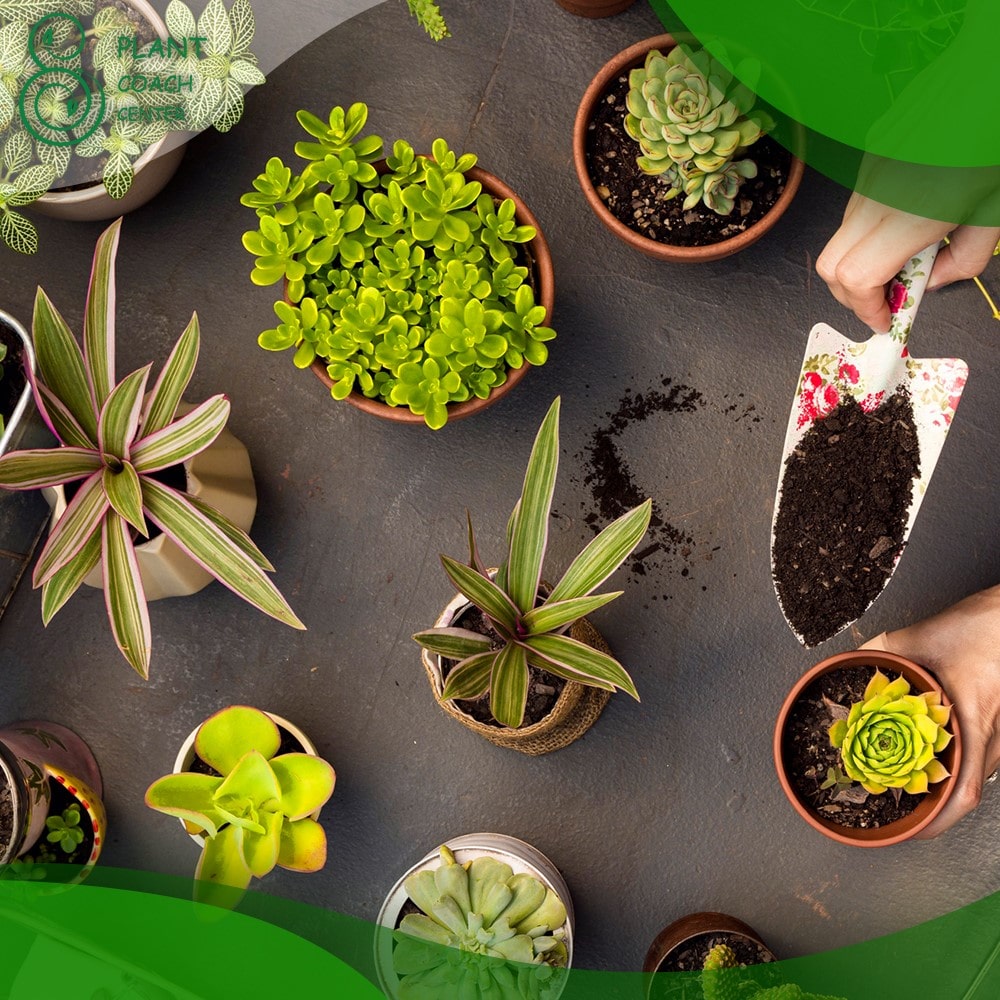When to Cut Back Plants
Properly maintaining and pruning plants is essential for their health and overall growth. Understanding the growth cycle and when to cut back plants are crucial aspects of plant care. In this comprehensive guide, we will explore the fundamentals of pruning, discuss different plant growth patterns, highlight signs indicating the need for pruning, delve into specific pruning techniques for various plant types, provide seasonal guidelines, address common mistakes to avoid and offer problem-solving strategies. Let’s dive into plant coaching and learn when and how to cut back plants for optimal results.
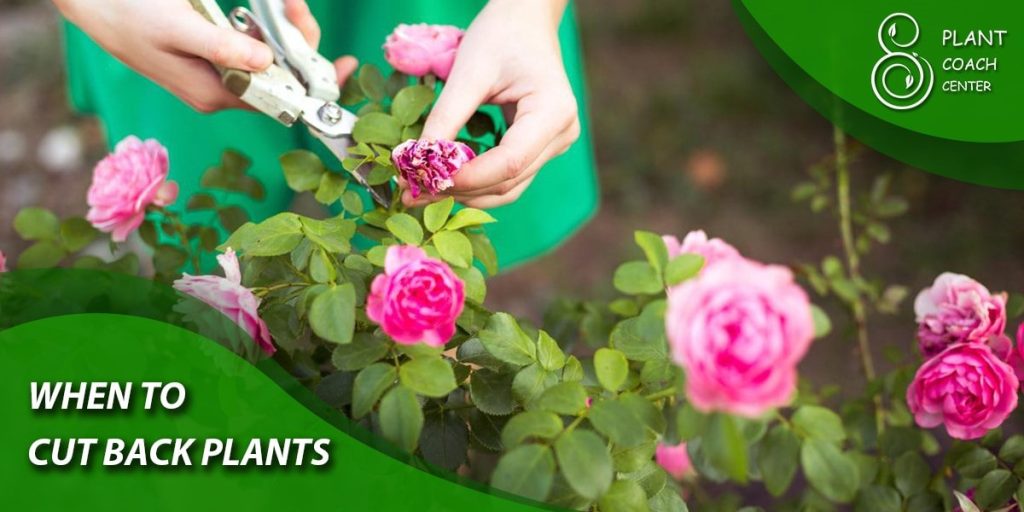
Fundamentals of Pruning
Pruning is a gardening technique that selectively removes plant parts, such as branches, buds, or roots. This process helps shape the plant, control its size, improve airflow and light penetration, and encourage healthy growth. To begin, you’ll need basic tools like pruning shears, loppers, and a saw. However, before you start pruning, you must take necessary safety precautions, such as wearing protective gear and ensuring the tools are clean and sharp.
Understanding Plant Growth Patterns
Different plants exhibit various growth patterns, influencing how and when to cut them back. Annual plants complete their lifecycle in one growing season, so they can be pruned after flowering. Perennial plants, on the other hand, live for multiple years, and pruning strategies may differ based on their growth habits. Additionally, distinguishing between deciduous and evergreen plants is crucial, as the timing and pruning techniques may vary. Flowering plants have unique pruning requirements to maximize their blooming potential and maintain their overall health.
Signs It’s Time to Cut Back Plants
Knowing when to cut back plants is crucial for their health and appearance. Here are some key signs that indicate it’s time to grab your pruning tools and give your plants a trim:
Overgrown Size and Shape
When a plant starts to outgrow its designated space or loses its desired shape, it indicates that pruning is necessary. Overgrown plants can become unsightly and obstruct pathways or overshadow nearby plants, hampering their growth. You can restore the plant’s form and maintain a harmonious garden layout by cutting back excess growth.
Unhealthy or Damaged Branches
Damaged or diseased branches pose a risk to the plant’s overall health. Signs of damage include broken or dead branches, pest infestations, or fungal infections. Pruning these affected parts helps prevent the spread of diseases, stimulates new growth, and improves the plant’s ability to focus its resources on healthy branches and foliage.
Pruning for Aesthetics and Landscaping
Sometimes, plants may not necessarily show signs of distress, but pruning is desired for aesthetic reasons. Trimming plants can help create a more visually appealing landscape, balance plant growth, and maintain a neat and well-maintained appearance. Pruning also allows you to showcase specific features of the plant, such as its unique form, colorful foliage, or attractive blooms.
By watching for these signs, you can identify when your plants require pruning intervention. Regularly assessing the condition and appearance of your plants will help you determine the right time to cut back and maintain their optimal health and beauty.
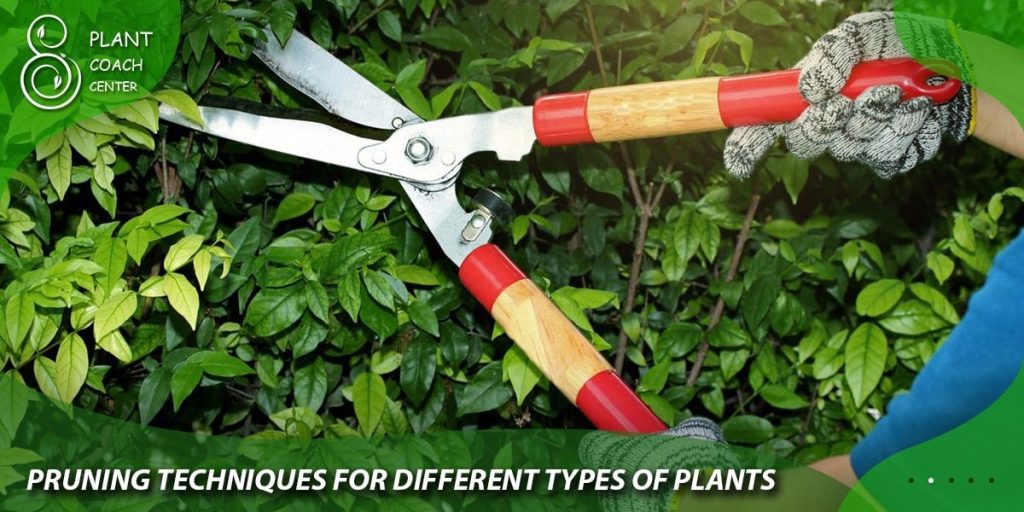
Pruning Techniques for Different Types of Plants
Different types of plants have specific pruning requirements to ensure optimal growth and health. Understanding the appropriate pruning techniques for each plant type is essential. Here are some key pruning techniques for different categories of plants
Trees and Shrubs
- Deciduous Trees: Pruning deciduous trees involves removing dead or damaged branches, thinning the canopy to improve airflow and light penetration, and shaping the tree to maintain its structural integrity. Structural pruning is typically done during the dormant season to encourage healthy growth.
- Evergreen Trees: Pruning evergreen trees focuses on maintaining their shape, removing dead or diseased branches, and promoting denser foliage. Light pruning can be done during the growing season, but major pruning should be reserved for the dormant season.
- Shrubs: Pruning shrubs promote healthy growth, maintain their desired size and shape, and enhance flowering. Techniques may include rejuvenation pruning, which involves cutting back the shrub severely to stimulate new growth, or selective pruning to remove specific branches for shaping and thinning.
Perennial Flowers and Ornamental Grasses
- Pruning After Blooming: Many perennial flowers benefit from pruning after they have finished blooming. This involves cutting back the spent flower stalks to encourage the growth of new stems and blooms. It also helps maintain the plant’s appearance and prevents self-seeding in the garden.
- Division and Deadheading: Dividing perennial plants involves splitting mature clumps into smaller sections to control their size, rejuvenate their growth, and promote healthier blooms. Deadheading, which removes spent flowers, redirects the plant’s energy toward producing more flowers and prevents seed production.
Fruit Trees and Bushes
- Pruning for Optimal Fruit Production: Pruning fruit trees and bushes is crucial for maximizing fruit production, improving air circulation, and controlling the size and shape of the plant. Techniques such as thinning, heading back, and shaping the canopy can promote better fruit quality, ensure sunlight reaches the lower branches, and facilitate easier harvesting.
- Training Young Trees and Renewing Older Ones: Young fruit trees require training to establish a strong framework of branches. This involves selecting and pruning certain branches to create a well-balanced structure. Older fruit trees may require renewal pruning, which involves removing old or unproductive wood to encourage new growth and maintain productivity.
By applying these pruning techniques specific to different types of plants, you can promote healthier growth, maintain desired shapes and sizes, optimize flowering and fruit production, and ensure the overall beauty and vitality of your garden. It’s essential to research and understand the specific needs of each plant species before pruning to achieve the best results.
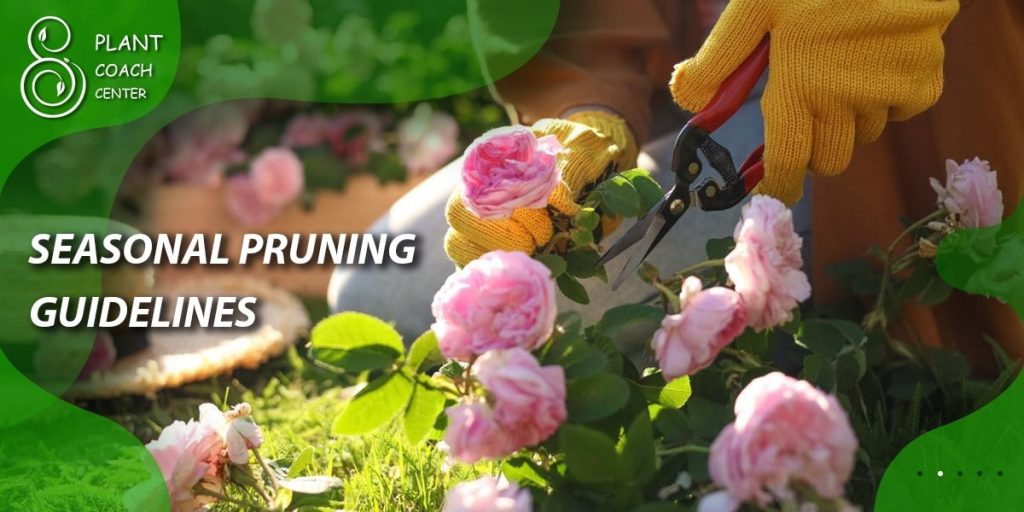
Seasonal Pruning Guidelines
Timing plays a crucial role in successful pruning. Different seasons offer varying conditions for plant growth, dormancy, and recovery. Understanding the seasonal pruning guidelines will help determine the most appropriate time to prune your plants. Here are the main considerations for each season:
Pruning in Spring
Spring is a popular season for pruning as many plants emerge from their winter dormancy. However, the timing of spring pruning can vary depending on the specific plant and its growth habit. Here are some general guidelines:
- Early Spring: Early spring is ideal for pruning deciduous trees and shrubs before new growth begins. Remove any dead, damaged, or crossing branches. Thinning the canopy allows better airflow and light penetration. Prune flowering shrubs after they have bloomed.
- Late Spring: Late spring is a suitable time to prune evergreen trees and shrubs. Light pruning can help shape the plants and remove any winter damage. Avoid heavy pruning, as it may interfere with new growth.
Pruning in Summer
Summer pruning focuses on controlling growth and directing the plant’s energy toward fruiting or flowering. Consider the following guidelines:
- Early Summer: Early summer is the time for pruning spring-flowering shrubs that bloom on old wood. Once they have finished blooming, remove dead flowers and thin out the shrub to maintain its shape and size.
- Mid to Late Summer: Prune fruit trees and bushes in mid to late summer to remove water sprouts (vigorous vertical shoots) and suckers (shoots growing from the base of the plant). Light pruning can also be done to manage the size and shape.
Pruning in Fall
Fall pruning primarily focuses on clean-up and preparation for winter. Keep these points in mind:
- Late Fall: Towards the end of fall, remove dead or diseased branches and any weak or crossing branches. Thinning the canopy can help prevent snow or ice damage during winter.
Pruning in Winter
Winter pruning is suitable for certain deciduous trees and shrubs when they are fully dormant. Consider the following:
- Late Winter: Prune deciduous trees and shrubs during late winter before new growth begins. With no leaves on the branches, assessing the plant’s structure and selectively removing branches for shaping, thinning, or rejuvenation is easier.
Remember, these are general guidelines, and there may be variations depending on your specific climate and plant species. Always research and consider the specific requirements of each plant before pruning. Adhering to seasonal pruning guidelines ensures that your plants experience minimal stress, recover well, and thrive in the coming seasons.
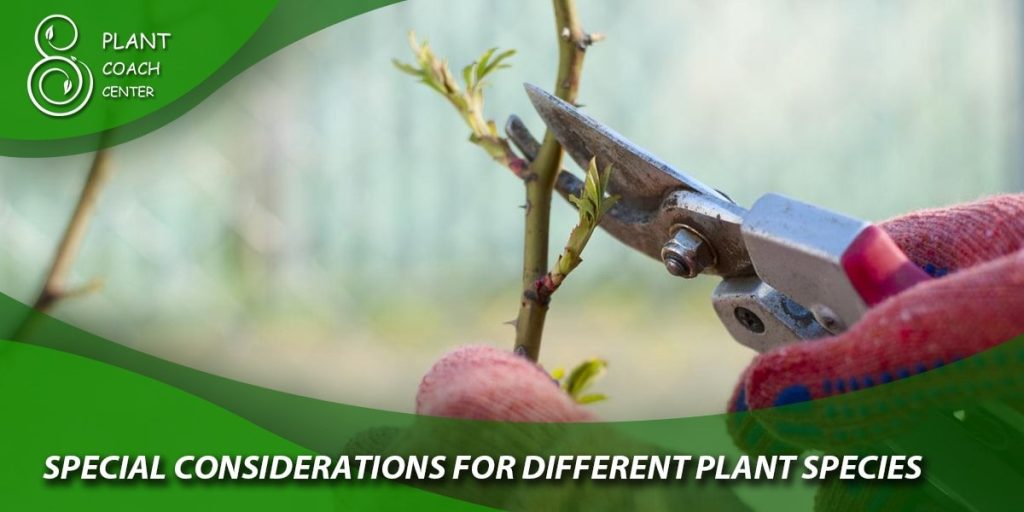
Special Considerations for Different Plant Species
When it comes to pruning, different plant species have specific considerations and techniques that must be considered. Understanding these special considerations will help you tailor your pruning approach to each plant’s unique needs. Here are some key points to consider for different plant species:
- Roses:
Roses require specific pruning techniques to promote their health, abundant blooms, and desired shape. Consider the following guidelines:
- Remove dead or damaged wood: Prune out any dead, diseased, or damaged wood to prevent the spread of diseases and promote new growth.
- Shaping and thinning: Shape rose bushes by selectively removing branches to maintain an open and well-ventilated structure. Thinning out crowded areas allows better airflow, reducing the risk of fungal diseases.
- Rejuvenation pruning: Every few years, perform a more drastic rejuvenation by cutting the rose bush to about 1/3 of its height. This helps stimulate new growth and revitalizes the plant.
- Climbing Plants:
Climbing plants require pruning to manage their growth, encourage flowering, and prevent overgrowth. Consider the following guidelines:
- Prune after flowering: Climbing plants often flower on old wood, so pruning allows you to remove spent blooms and control their growth. Avoid heavy pruning that may remove potential flowering shoots for the following season.
- Train and support growth: Prune climbing plants to train them along trellises, fences, or walls. Selectively remove wayward or overly vigorous branches and tie them to the support structure for better growth and coverage.
- Hedges:
Pruning hedges is essential for maintaining their shape, density, and privacy. Consider the following guidelines:
- Regular trimming: Hedges should be trimmed regularly to encourage dense growth. Use sharp pruning shears or hedge trimmers to achieve clean cuts and maintain a neat appearance.
- Tapered shape: When pruning hedges, consider creating a tapered shape with a wider base than the top. This allows sunlight to reach the lower branches, preventing bare patches and promoting even growth.
- Topiary and Espalier:
Topiary and espalier techniques involve shaping plants into specific designs. Consider the following guidelines:
- Prune to maintain desired shape: Regularly prune topiary and espalier plants to maintain their intricate shapes. Use sharp shears to achieve precise cuts and trim excess growth to preserve the design.
- Train and tie branches: Use ties or clips to guide the branches of topiary or espalier plants along the desired framework or trellis. Prune any unwanted shoots or branches that deviate from the intended design.
Understanding these special considerations for different plant species allows you to approach pruning with the necessary knowledge and techniques specific to each plant’s requirements. Applying the appropriate pruning methods can promote healthier growth, maintain desired shapes, and enhance the beauty of these unique plant types in your garden.
Common Mistakes to Avoid when Pruning
Pruning is a skill that requires careful consideration and proper technique to ensure the health and vitality of your plants. Avoiding common pruning mistakes will help you achieve optimal results. Here are some key mistakes to steer clear of:
Improper Timing
Pruning at the wrong time of year can disrupt the plant’s growth cycle and reduce its ability to recover. It’s essential to understand the specific pruning requirements of each plant species and prune accordingly. Some plants are best pruned during their dormant season, while others benefit from pruning after flowering.
Over-pruning and Under-pruning
Over-pruning and under-pruning can negatively affect plant health. Over-pruning, which involves removing excessive foliage or branches, can weaken the plant and make it susceptible to stress, disease, and sunburn. On the other hand, under-pruning can lead to overcrowding, poor airflow, and decreased sunlight penetration, hindering the plant’s overall growth and vigor.
Incorrect Pruning Techniques
Using improper pruning techniques can damage the plant and impede its future growth. Some common mistakes include making improper cuts, such as leaving stubs or cutting too close to the main stem, which can lead to infections and hinder healing. Learning proper pruning techniques for different plants and using sharp, clean tools to achieve clean cuts is important.
Neglecting Tool Maintenance
Neglecting the maintenance of your pruning tools can lead to ineffective pruning and potential disease transmission between plants. Keeping your tools clean and sanitized before and after each use is crucial. Regularly sharpening the blades ensures clean cuts, minimizing damage to the plant.
Pruning During Extreme Weather
Pruning during extreme weather conditions, such as freezing or scorching heat, can harm the plant. Freezing temperatures can damage freshly pruned branches, and excessive heat can stress the plant and impede its recovery. It’s best to prune during mild weather conditions when the plant can handle the stress of pruning better.
Ignoring Plant Health Issues
Pruning should not solve all plant health problems. Before pruning, it’s important to address underlying issues, such as diseases, pests, or nutrient deficiencies. Pruning alone may not solve these problems and can exacerbate them if not properly addressed.
Lack of Planning
Before pruning, having a clear plan is crucial. Assess the plant’s growth pattern, identify which branches need to be removed or trimmed, and visualize the desired outcome. Poor planning can result in uneven or unbalanced pruning, compromising the plant’s aesthetic appeal and overall health.
By avoiding these common pruning mistakes, you can ensure your plants receive the proper care and attention they need. Remember to research and understand the specific pruning requirements of each plant species and apply the appropriate techniques for optimal results.
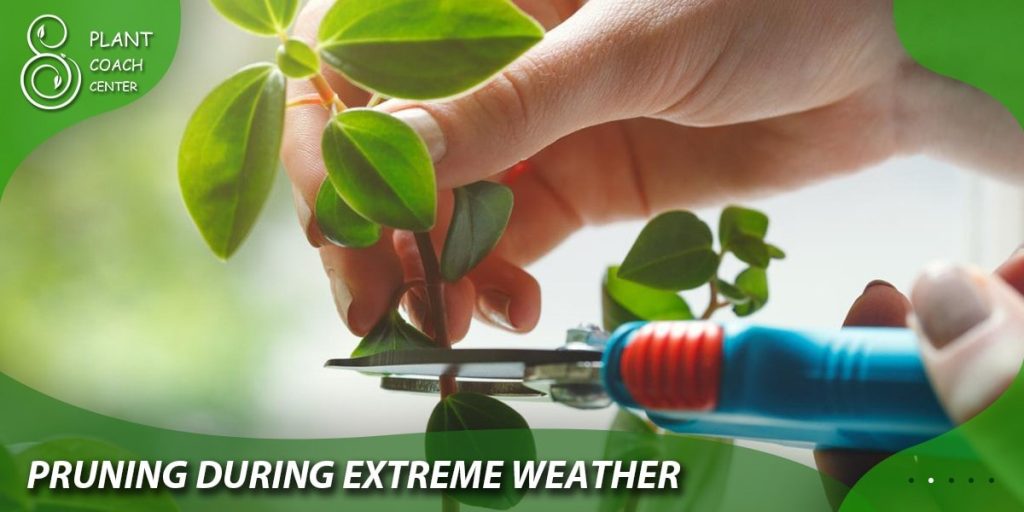
Pruning Challenges and Problem-Solving
Dealing with plant diseases and pest issues is an ongoing challenge in gardening. Pruning significantly manages these problems by improving light penetration and air circulation, reducing moisture and humidity, and promoting plant vigor. Additionally, strategic pruning and rejuvenation techniques can restore neglected or overgrown plants.
Conclusion
Plant pruning is a vital aspect of plant care and maintenance. By understanding the fundamentals of pruning, recognizing plant growth patterns, knowing when to cut back plants, and employing the appropriate techniques for different species, gardeners can promote healthy growth and enhance the beauty and productivity of their gardens.
Remember, each plant is unique, and finding the right balance between pruning and allowing natural growth is key to maintaining a thriving and visually appealing garden. So grab your tools, put on your gardening gloves, and embark on the journey of plant coaching through timely and precise pruning. Your plants will thank you with their renewed vitality and abundance.
When is the best time to prune plants?
It depends on the plant, but generally, prune in the dormant season or after flowering.
How much should I prune my plants?
Avoid over-pruning, but remove dead, damaged, or crossing branches as needed.
Can I prune my plants during extreme weather?
It's best to avoid pruning during freezing temperatures or scorching heat. Choose mild weather conditions for optimal results.


